Polestar. Maybe you’ve heard of them before, maybe you haven’t. So let me refresh your memory. Flash Engineering was founded in 1996 as a Swedish motorsport team. In 2005 Flash Engineering became Polestar Racing and started tuning Volvo production cars. Then, in 2010, Volvo was acquired by Chinese car manufacturer Geely, and in 2015, Volvo purchased the Polestar brand, and Polestar Racing became Cyan Racing.
In 2017, Volvo and parent Geely decided to turn Polestar into a separate EV brand. Polestar cars focus on premium performance, and are named in the order they were introduced. The Polestar 1 (2019) was a plug-in hybrid GT coupe. It was followed by Polestar 2 (2020), a fastback electric sedan which shares its platform with the Volvo C40 and XC40. The Polestar 3 (2024) is an electric SUV that’s closely related to the Volvo EX90.
Which brings us to the 2026 Polestar 4, a sporty EV built on the same platform as the Zeekr 001. Zeekr is another Geely brand, like Polestar, Volvo, Lotus, and Smart. The Polestar 4 doesn’t have a rear window, which is rather unusual (controversial?) for a passenger vehicle.
Configurations and prices
- Trims
- Single motor RWD ($56,400): 310-mile EPA range, 0-60mph in 6.9sec
- Dual motor AWD ($62,900): 280-mile EPA range, 0-60mph in 3.7sec
- Packages
- Plus pack ($5,500): Harman Kardon sound, HUD, hands-free power liftgate, auto-dimming mirrors, rear display, 12-way power front seats, reclining rear seats, power adjustable & heated steering wheel, heated rear seats, tri-zone climate with PM2.5 filtration, and more
- Performance pack ($4,500): 22-inch wheels, performance suspension, Brembo brakes, gold brake calipers & seatbelts
- Napa upgrade ($3,700): napa leather seats, front headrest speakers, ventilated & massaging front seats, rear comfort headrests, and more
Breaking the SUV mold
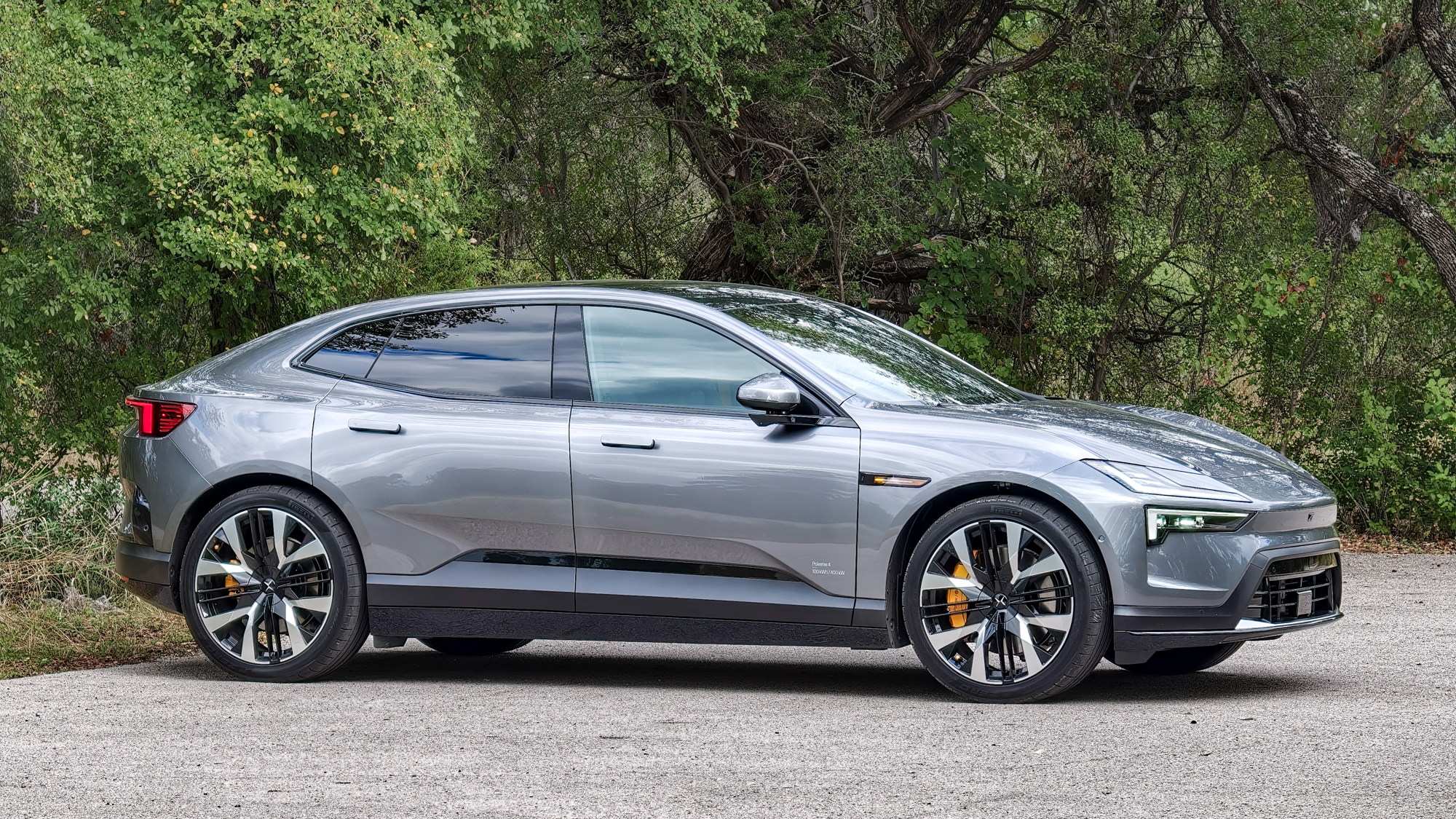
Polestar will tell you the Polestar 4 is an electric SUV coupe. But that’s wrong. It’s really a fastback electric sedan with a liftgate like the Polestar 2 — just slightly bigger and immensely sleeker. And don’t go calling it a crossover either. In my book, the Polestar 4 is a modern-looking car with great proportions and clean Scandinavian lines, a design that combines athleticism with minimalism.
In a controversial (perhaps?) design twist, the Polestar 4 doesn’t have a rear window. What you get instead is a rear-facing HD camera in a little pod on the roof just above the rear liftgate, and a bright 8.9-inch (1480×320 pixel) digital rearview mirror which can be switched between displaying a live view from the HD camera and being a standard rearview mirror. When switched off, all you see in that rearview mirror is the back seat.
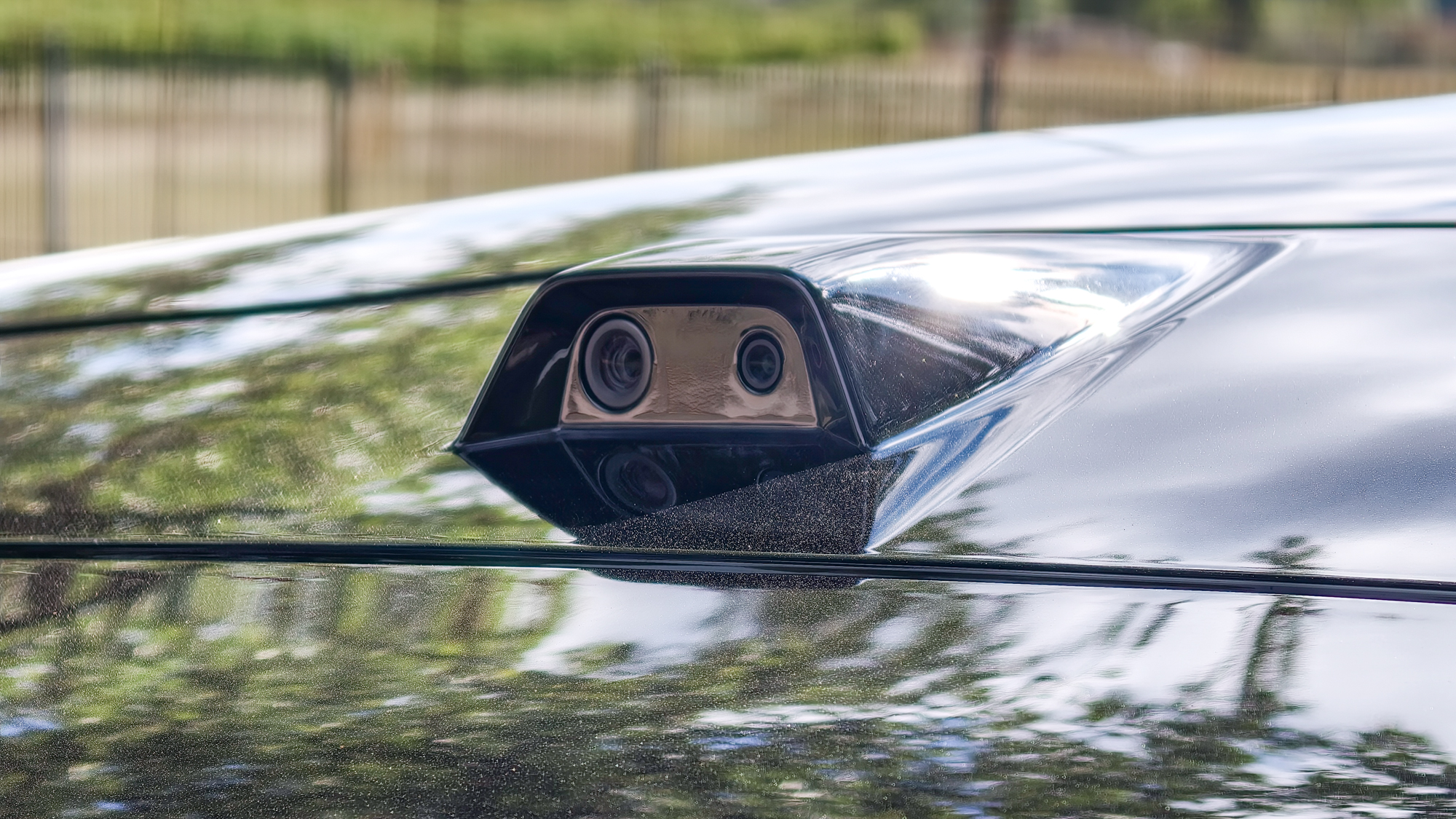
Removing the rear window allowed Polestar to position the rear roof structure further back, and to give the Polestar 4 sleek coupe-like proportions without sacrificing rear seat headroom. In addition, the 118-inch long wheelbase delivers tons of rear seat legroom. There’s enough space in the back seat for the Polestar 4 to offer optional power reclining rear seats, and the massive glass roof further contributes to this sense of space.
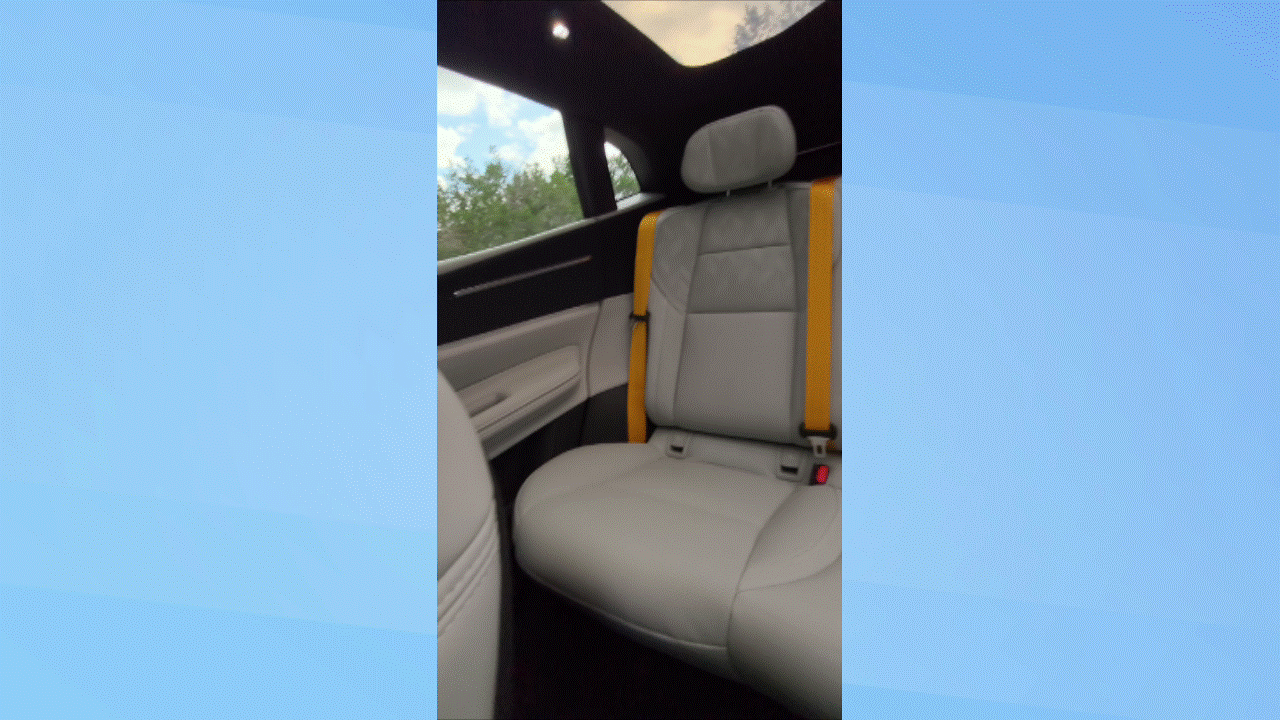
Speaking of space, the Polestar 4 features a small 0.5 cu.ft frunk and generous cargo room in the trunk, including under-floor storage. You get 18.6 cu.ft of storage with the 60/40 split rear seats folded up, and 54.2 cu.ft of storage with the seats folded down. The power liftgate (optionally hands-free) makes it easy to load and unload cargo, and the lack of rear window keeps your cargo safe from prying eyes.

Between the dual blade headlights and the frameless sideview mirrors, there’s a lot of Volvo influence in the Polestar 4’s design, and that’s absolutely a good thing. The optional illuminated front logo is another subtle touch. Inside you’ll find tasteful sustainable materials like SoftTech, inspired by fashion and sportswear and used for the seats, and TechKnit, a mesh-like 3D knit material that’s LED backlit on the door cards and dashboard.
Power heated seats are standard, but heated rear seats are only available with the Plus pack, alongside power-adjustable heated steering wheel and more goodies. The Napa upgrade adds Bridge of Weir leather seating surfaces and ventilated massaging front seats. Sadly, ventilated massaging rear seats aren’t available. Let’s hope Polestar adds this as an option in the future to complement the power reclining rear seats.
A tech forward EV

The Polestar 4 is a full SDV (Software Defined Vehicle) that incorporates some of parent company Geely’s newest tech. While it’s manufactured in Busan, South Korea, the Polestar 4 — alongside the Polestar 3, Volvo EX30, and Volvo EX90 — is the closest you can get to experiencing a Chinese EV in North America. In other words, the Polestar 4 is a tech forward vehicle, like Tesla and Rivian’s EVs, and that’s great news.
In addition to the 8.9-inch digital rearview mirror, the Polestar 4 packs a 15.4-inch (1920×1200 pixel) landscape touchscreen (a first in a Polestar or Volvo), a 10.2-inch driver display, an optional 14.7-inch HUD (Head-Up Display), and an optional 5.7-inch rear touchscreen. You also get 4G connectivity (free for the first 36 months), OTA updates, a standard 360-degree camera view, plus support for NFC key cards, key fobs, and phone keys.
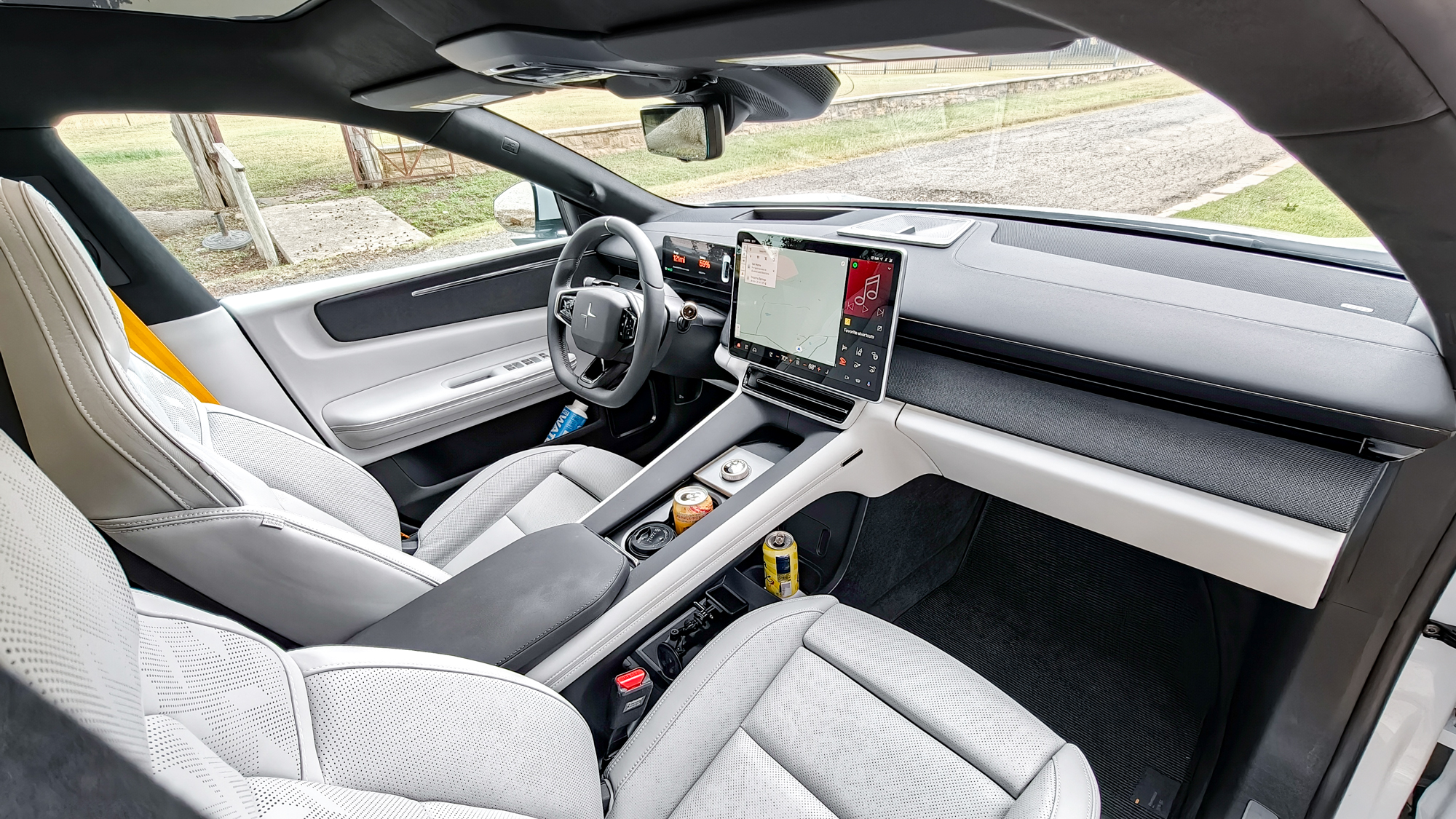
Like most other modern Polestar and Volvo cars, the Polestar 4’s infotainment system runs Android Automotive with Google built-in. As such, you get native Google Maps, Google Assistant, and Google Play Store integration, plus a new feature, exclusive to the Polestar 4 (for now) called Google Live Lane Guidance. This lets Google Maps “see” the road to give you better directions, by highlighting the best lane, for example.
Since the Polestar 4 features a 15.4-inch landscape display (other Polestar and Volvo vehicles have portrait screens), the user interface takes advantage of the additional real estate by letting you place configurable app widgets (phone, music, tire pressure, trip details, favorites etc…) to the right of the map. You can either have a full-screen map with no widgets, a 3/4-size map with two widgets, or a half-size map with four widgets.
I’m a big fan of the Polestar 4’s “show don’t tell” user interface approach, which provides direct access to most features with just one tap and includes a lot of whitespace for an easy-to-navigate, uncluttered experience. The Polestar 4 also gets rid of vestigial controls like the power button (just press the brake pedal instead) but lets you access most critical controls from the steering wheel buttons.
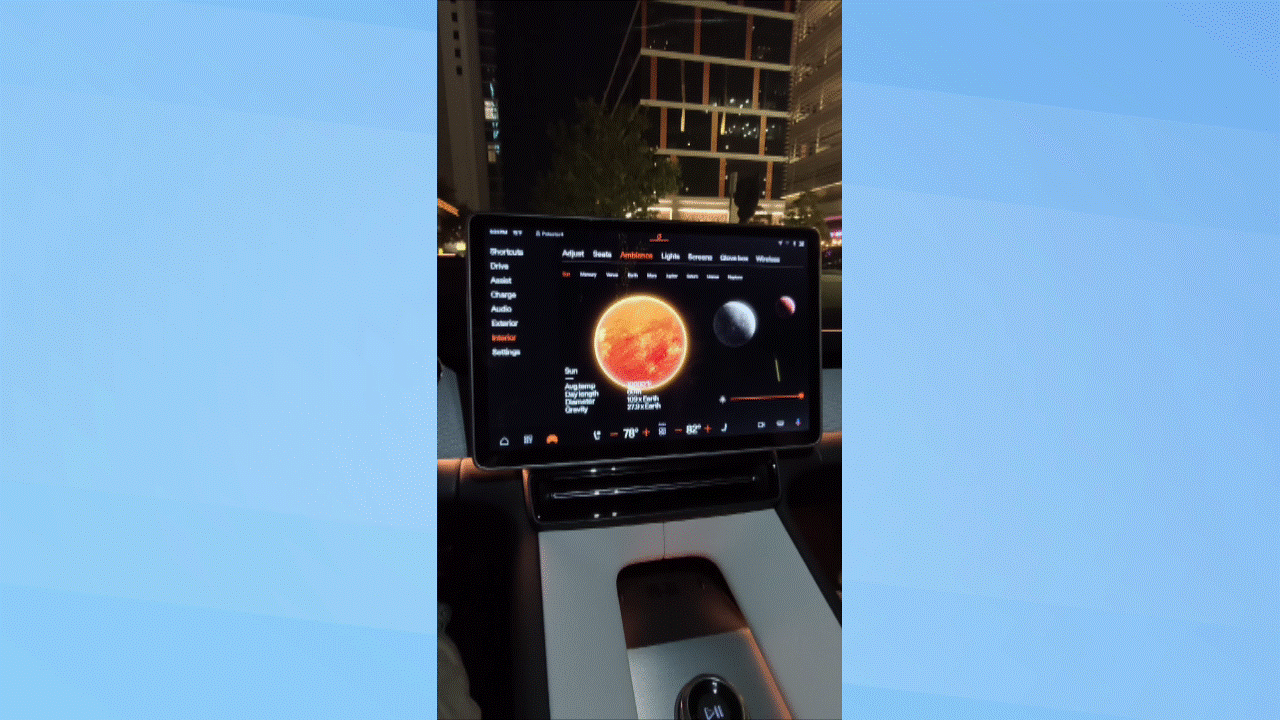
The planet ambient lighting app is worth a mention. It allows you to change the ambient lighting to match the colors of our solar system’s planets and sun (red for Mars, blue for Earth, etc…), by swiping between beautifully animated 3D renders of each celestial object. And like Tesla and Rivian’s EVs — and unlike most legacy manufacturers — the Polestar 4 includes a pet mode, “keep climate on” mode, and a built-in dashcam.
But unlike Tesla and Rivian, the Polestar 4 does offer wired and wireless Apple CarPlay. Android Auto (projection) is missing here, however, which is strange. I presume that’s because you can get most of the same functionality by logging into the Android Automotive infotainment system with your Google account and by using the Polestar app on your Android phone. Honestly, as an Android user, I’m fine with this.
Wrapping up the tech features, you get four USB Type-C ports (15W with data and 18W up front, 60W and 18W in the back), and a Qi-compatible wireless charging pad (15W) in the center console. Options include a lovely Harman Kardon audio system, front headrest speakers, and a dimmable electrochromic glass roof. The air vents are adjusted electronically using the touchscreen. I don’t mind but your mileage may vary.
A driver’s car

As I mentioned above, the Polestar 4 is available in two trims:
Single motor RWD: 310-mile EPA range, 0-60mph in 6.9sec, 200kW permanent magnet rear motor, 272hp, 253 lb-ft torque, passive dampers, 2000lbs towing capacity
Dual-motor AWD: 280-mile EPA range, 0-60mph in 3.7sec, two 200kW permanent magnet motors (with front motor disconnect), 544hp, 506 lb-ft of torque, semi-active dampers, 3500lbs towing capacity
Both Polestar 4 trims share the same 100kWh 400V battery pack made by CATL, which supports 200kW DC fast charging (10–80% in 30 minutes) and 11 kW AC charging via a CCS1 charging port. The Polestar 4 is compatible with Tesla Superchargers (using a NACS adapter) and the charging port is conveniently located in the right rear corner. Let’s hope that Polestar swaps the CCS1 charging port for a NACS port at some point soon.
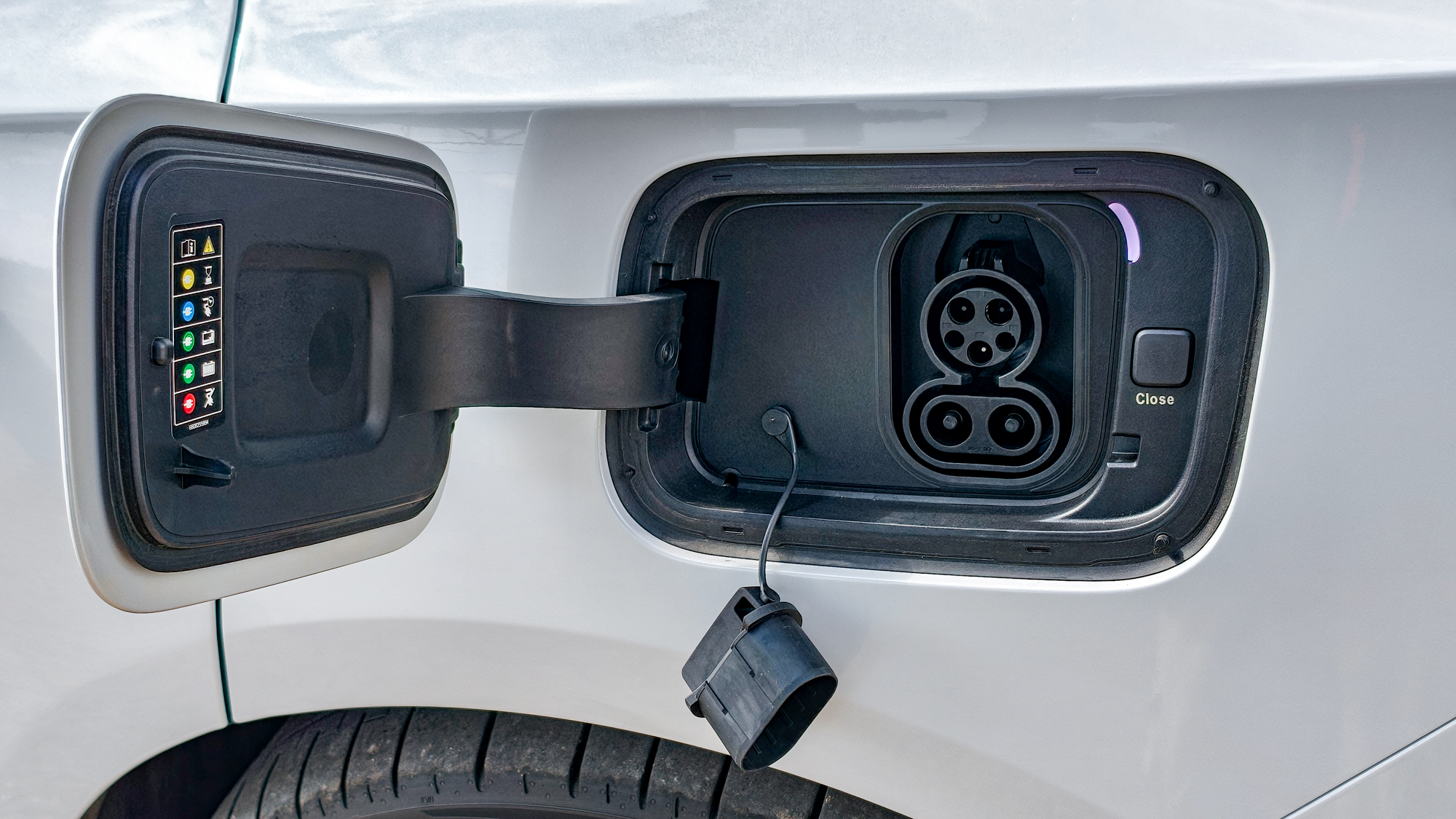
I mostly drove a fully loaded dual-motor AWD Polestar 4 with the Plus pack, Performance pack, and Napa upgrade (priced at over $80k), but also took the single motor RWD trim for a brief spin. Regardless of which trim and pack(s) you pick, the Polestar 4 is an absolute delight to drive. You get true one-pedal driving, two levels of regen, and a performance mode on the AWD trim (this disables the front motor disconnect).
The Polestar 4 rides and handles extremely well. It’s nimble and playful in the twisties, but compliant enough to be comfortable on long drives — think sport sedan. Obviously, the AWD trim is significantly faster, but it also feels heavier. The RWD trim is lighter on its feet, and while it’s by no means slow, it doesn’t deliver the kind of EV punch I crave. But the biggest difference between these two trims is in the steering.

You’ll find three steering modes (Light, Standard, and Firm). In Firm mode, which was my preferred setting, the steering felt kind of vague and lighter than expected on the AWD trim, making it difficult to accurately place the car on the road. Firm mode was perfectly fine on the RWD trim, however. I assume this difference is related to the AWD trim’s semi-active dampers, which also have three modes (Standard, Nimble, and Firm).
Clearly, the AWD trim still needs some steering tweaks. Both trims come with 20-inch wheels by default. Twenty-one inch wheels are optional, and the Performance pack comes with 22-inch wheels and Brembo brakes. The Polestar 4 comes standard with Pilot Assist, a Level 2+ ADAS (Advanced Driver Assistance System) that’s based on Mobileye’s Supervision tech and features automatic lane change. It seemed fine in my brief time using it on the freeway.
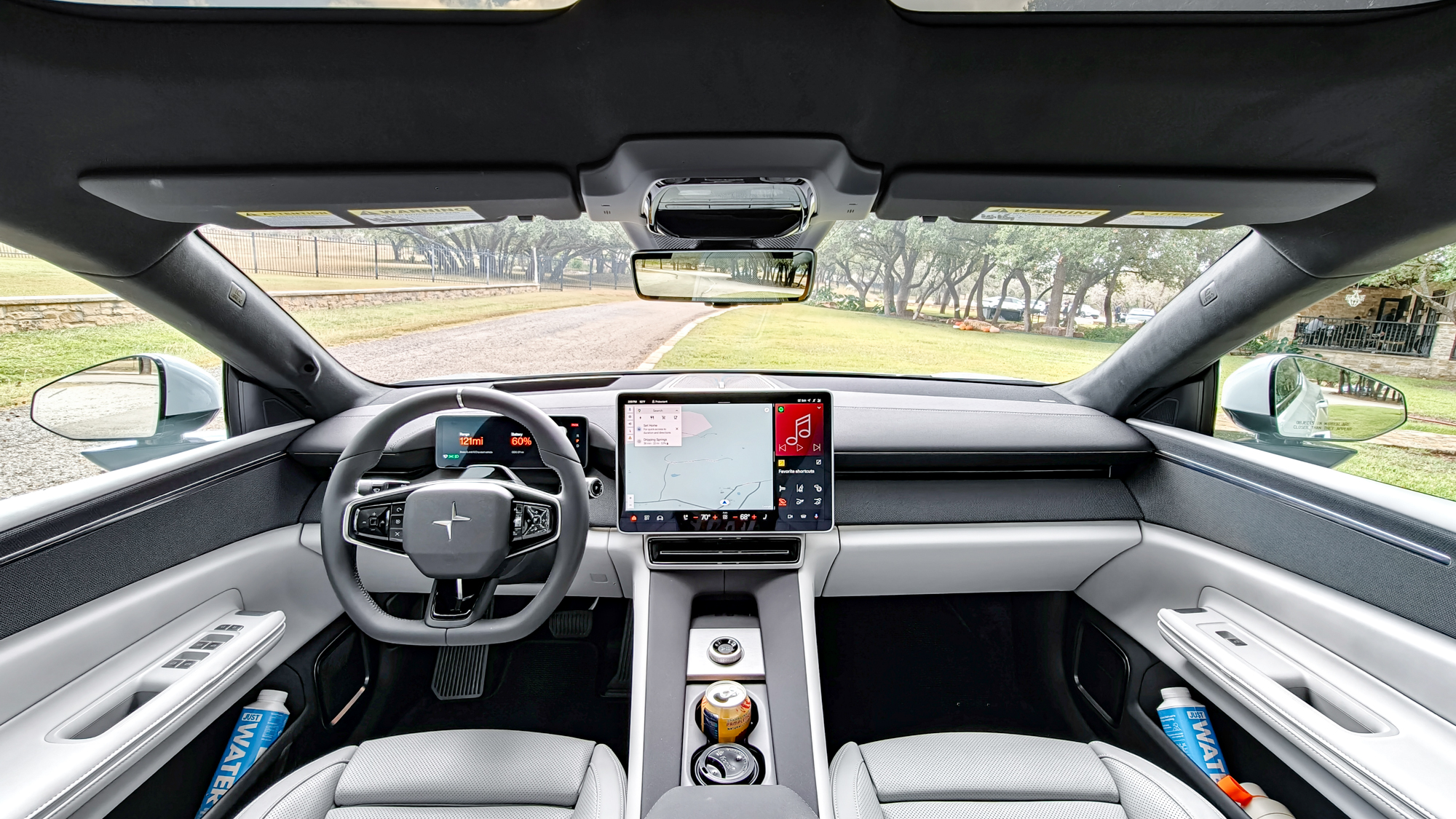
But what about that 8.9-inch digital rearview mirror? It takes some getting used to for sure, but the lack of rear window is less of an issue than I anticipated. Yes, it’s more difficult to focus on a display than on a mirror, but it turns out that while driving, you don’t need to focus on the display. You just need to glance and look for hazards. And when you’re stopped and you’re able to focus on the display, you get a much wider rear view.
I’m a big fan

The Polestar 4 is an excellent sporty EV. It delivers premium performance in a design focused, coupe-like package that’s easy to live with. Plus, it’s one of the most tech forward EVs you can get in North America today beyond Tesla and Rivian. And thanks to Polestar’s years of vehicle tuning experience, the Polestar 4 is truly wonderful to drive. Oh, and did I mention it’s not an SUV? Yes, I’m a big fan indeed.
But, while the missing rear window and digital rearview mirror aren’t showstoppers, there’s room for improvement. The steering on the AWD trim needs some tuning, and the electronically adjustable air vents and the lack of Android Auto will be a dealbreaker for some. The Polestar 4 is also expensive, especially once you start adding packages. And if I’m going to spend over $80k, I’d like to have ventilated massaging rear seats.

Follow Tom’s Guide on Google News and add us as a preferred source to get our up-to-date news, analysis, and reviews in your feeds.











